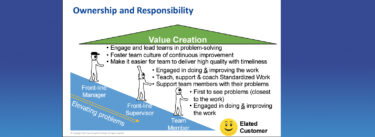When I first heard the news about the new healthcare venture to be formed by Amazon CEO Jeff Bezos, Berkshire Hathaway CEO Warren Buffet, and JPMorgan Chase CEO Jamie Dimon, my first reaction was: fasten your seatbelts, America. This will be really interesting and potentially really disruptive for the existing healthcare system.
Of course, we know hardly anything about this new venture, other than (1) these are really big, capable partners, (2) it will have something to do with using technology, and (3) they’ll start by using their own nearly one million employees as a testbed:
“The initial focus of the new company will be on technology solutions that will provide U.S. employees and their families with simplified, high-quality and transparent healthcare at a reasonable cost.”
What makes these three giants – not a healthcare provider among them – think that they can improve upon the vaunted American healthcare system, said by some to be the best in the world?
Well, much of the answer is: it isn’t the best, not by a long shot, so there is plenty of value to be captured and potentially returned to the consumers, employers, and government bodies that pay for healthcare in the US.
The sad fact is: medical outcomes for individual patients in the U.S. are no better in the aggregate than in other advanced countries; population health and wellness is much poorer, with higher incidence of chronic disease, substance abuse, and other health conditions than found in Europe or Japan, and the cost of American healthcare as a fraction of GDP is almost double what it is in these other countries. We are paying more, getting less, and costs continue to increase faster than inflation – that’s the “tapeworm” that Amazon and its partners say is eating the U.S. economy, depressing wages, and absorbing an ever-larger share of local, state, and Federal budgets. They’re right.
So, buried in the $3.5 trillion that we spend annually on healthcare in the U.S. is plenty of muda that, if reduced, could generate significant savings for patients, employers, and government, plus a nice return for Amazon and its partners.
Where I live in Boston, finding and eliminating that muda has the potential for real and painful disruption: Boston healthcare is dominated by academic teaching hospitals (one of which I used to run), associated with Harvard, Tufts and Boston University medical schools. They provide superb care but are among the most expensive hospitals in the United States.
If the U.S. healthcare system does a decent job of patient care (although a lousy job of population health), it is without a doubt the most effective healthcare system in the world in transferring wealth from customers – patients and those who pay their costs – to the stakeholders in the healthcare system, those that receive the $3.5 trillion in the form of wages, hospital charges, insurance premiums, fees for medical devices, pharmaceuticals, and the list goes on and on. “Somebody’s cost is someone else’s income”, so real transformation of the U.S. healthcare system will mean that those stakeholders (I used to be one of them …) will get a smaller share of the national wealth. This will hurt, and those stakeholders will not go quietly.
My advice for Amazon and their partners:
- There are three social groups that pay the $3.5 trillion annual healthcare bill: government (through Medicare and Medicaid), employers (through company-sponsored health insurance, and patients (which is all of us). Focus like a laser on creating dramatically better value for those groups, on returning some meaningful fraction of the 18% of GDP that we now spend on healthcare back to patients, government, and employers – and do so by structuring this new venture to get paid for outcomes, not quantity (think “lump sum”, not “time and materials”). The goal must be “healthier customers”, not “more tests performed” or “more hospital admissions.”
- Use technology to improve quality and the experience of care: wouldn’t you like to get routine health needs handled with the ease of booking an airline ticket or a hotel room? Keep, and strengthen, the personal connection between patient and caregiver; technology can both deepen the human relationship and streamline the merely transactional.
- And, although they are stakeholders and beneficiaries of the existing system, listen to the millions of Americans involved at the point of care for the patient, to those doing the work. Like frontline workers in all industries, they know the system and all of its flaws and have much to teach. But they were also drawn to a mission of care for the patient, and although they will be anxious about the coming disruption, they want to heal.





